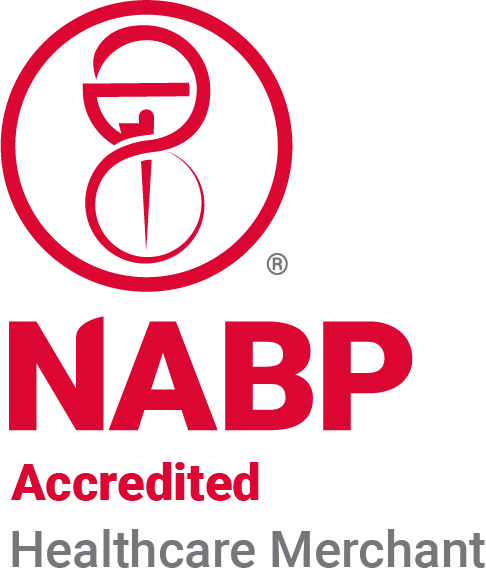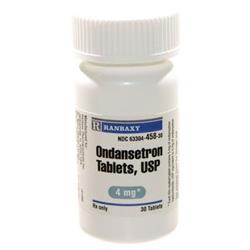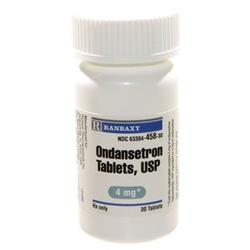Providing Quality & Trust
Ondansetron Tablet
Aurobindo
$0.52 - $0.96
$0.52 Each
Detailed Description
Ondansetron
(on-dan-sah-tron)
- Description: Antiemetic
- Other Names for this Medication: Zofran®
- Common Dosage Forms: Veterinary: None
Used to treat and/or prevent severe vomiting. May give oral products with or withoutfood. Usually tolerated well. See side effects for more information. If using compounded topical gel, wear gloves when applying. If using orally disintegrating tablets, protectthe tablets from moisture and be sure hands are dry whenever handling them.
How is this medication useful?
Ondansetron is used to treat and/or prevent severe vomiting in dogs and cats. The FDA (U.S. Food & Drug Administration) has approved this drug for use in humans, butitis not officially approved for use in animals. The FDA allows veterinarians to prescribe products containing this drug in different species or for other conditions in certain situations. You and your veterinarian can discuss why this drug is the most appropriate choice.
Uses/Indications:
Ondansetron is an antiemetic that may be used for nausea and vomiting in dogs and cats. Ondansetron, metoclopramide, and maropitant can be equally effective in reducing the frequency of vomiting in dogs with parvoviral enteritis. Ondansetron can be particularly effective for treating chemotherapy-associated vomiting. Ondansetron can be effective for cisplatin-induced nausea and vomiting and was more effective for nausea than maropitant; metoclopramide did not demonstrate any antinausea or antiemetic efficacy. A study in cats found that ondansetron 0.22 mg/kg IM administered with dexmedetomidine and buprenorphine (in the same syringe) reduced the incidence (≈33%) and severity of nausea and vomiting as compared with ondansetron given 30 minutes before dexmedetomidine and buprenorphine (67%) or when ondansetron was not given (76%).
In humans, ondansetron is approved for prevention and treatment of nausea and vomiting due to chemotherapy, radiation, and surgery. It may be used in combination with other anti-emetics.
What are the side effects of this medication?
Side effects that usually are not serious include:
- Constipation, sedation (sleepiness), or head shaking.
You don’t have to be overly concerned if you see any of these signs unless they are severe, worsen, or continue to be a problem. Contact your veterinarian if this happens.
Side effects that may be serious orindicate a serious problem:
- Heartrhythm problems or low blood pressure (both are rare).
If your animal collapses, faints, or has no energy, contact your veterinarian immediately.
Contraindications/Precautions/Warnings:
Ondansetron is contraindicated in patients hypersensitive to it or other agents in this class. Ondansetron may mask ileus or gastric distention; it should not be used in place of nasogastric suction or appropriate diagnostic assessment. Ondansetron should be used with caution in patients with hepatic dysfunction, as absorption may be increased because of reduced first-pass metabolism and half-life may be prolonged; dosage adjustment may be warranted in severe hepatic impairment.
In humans, ondansetron is pumped by P-glycoprotein (the protein encoded by the MDR1 gene, also known as ABCB1 gene), but there are currently no data stating whether it is pumped by canine P-glycoprotein. It is suggested to use caution when administering ondansetron to dogs with the MDR1 gene mutation.
Dose-related prolongation of the QT interval and cases of torsades de pointes have been reported in humans. Patients that have electrolyte abnormalities, have underlying cardiac conditions, or take other QT-prolonging drugs can be at greater risk. Ondansetron caused QT prolongation in healthy dogs, but QTc prolongation in sick dogs was identified by only 1 of the 2 methods used to calculate the QTc interval.
Serotonin syndrome has occurred in humans receiving ondansetron.
Adverse Effects:
Ondansetron appears to be well tolerated. GI effects (ie, constipation, diarrhea), sedation, extrapyramidal clinical signs (eg, head shaking), increased liver enzymes, arrhythmias, and hypotension can be possible (incidence in humans is less than 10%). Headaches occur in 10% to 25% of humans; relevance for veterinary patients is unknown. Transient vision changes, including blindness, during IV administration have been reported rarely in humans.
Drug Interactions:
In humans, ondansetron is a substrate of P-glycoprotein and CYP 3A4, although other CYP isoenzymes (eg, 2D6, 1A2) are involved in the drug’s metabolism to a lesser extent. The following drug interactions have either been reported or are theoretical in humans or animals receiving ondansetron and may be of significance in veterinary patients. Unless otherwise noted, use together is not necessarily contraindicated, but the potential risks should be weighed and additional monitoring performed when appropriate.
- APOMORPHINE: A human patient that received ondansetron and apomorphine developed severe hypotension and loss of consciousness. In humans, use together is contraindicated.
- AZOLE ANTIFUNGALS (eg, itraconazole, posaconazole): May inhibit ondansetron metabolism, and concurrent use may increase prolong QTc interval.
- CISPLATIN: Plasma cisplatin concentrations may be decreased.
- CYCLOPHOSPHAMIDE: Plasma cyclophosphamide concentrations may be decreased.
- DRUGS AFFECTING QTc INTERVAL (eg, amiodarone, cisapride, procainamide, quinidine, sotalol): Theoretically, ondansetron may have additive effects on QTc interval; possible serious arrhythmias may result.13
- MONOAMINE OXIDASE INHIBITORS (MAOIs; eg, amitraz, methylene blue, selegiline): Increased risk for serotonin syndrome has been reported in humans.
- METFORMIN: Ondansetron may increase the serum concentration of metformin.
- P-GLYCOPROTEIN INHIBITORS (eg, amiodarone, cyclosporine, diltiazem, quinidine): In humans, these drugs may increase serum concentrations of ondansetron. It is unclear if ondansetron is a P-glycoprotein substrate in veterinary patients.
- SEROTONERGIC DRUGS (eg, clomipramine, fluoxetine, mirtazapine, trazodone): Increased risk for serotonin syndrome has been reported in humans.
- TRAMADOL: In humans, use together may reduce the efficacy of both drugs. Veterinary significance is not known.

Powered by nopCommerce
This site is running in live payment mode. Real payments will be processed.

